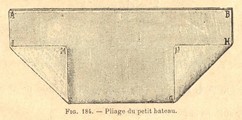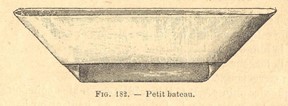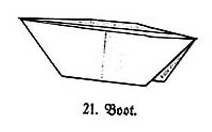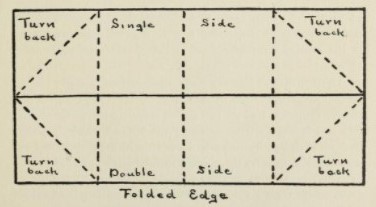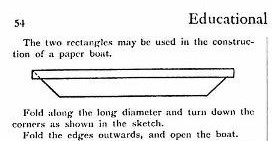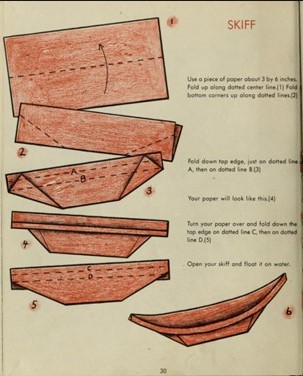| The Public Paperfolding History Project
Last updated 29/4/2024 x |
|||||||
| The Keelboat | |||||||
| This
page attempts to record what is known about the origin
and history of the origami design I call the Keelboat,
because it has a keel rather than a flat bottom to stand
on. Please contact me if you know any of this information
is incorrect or if you have any other information that
should be added. Thank you. It is a characteristic of this design of paper boat the paper is first folded in half, the bottom corners are folded inwards and the top edges turned down to hold the corners in place. The way in which the bottom corners are folded inwards and the amount of paper turned down to hold them in place can vary widely. ********** 1893 As far as I know a version of this design first appears in the historical record as 'Petit Bateau' in 'L'Annee Preparatoire de Travail Manuel' by M P Martin was published by Armand Collin & Cie in Paris in 1893.
********** The design also appears: 1910 As 'Boot' in Part 2 'Das Flechten' of 'Die Frobelschen Beschaftigungen' by Marie Muller-Wunderlich, which was published by Friedrich Brandstetter in Leipzig in 1910.
********** As 'Dory 1' in 'Studies in Invalid Occupation' by Susan E Tracy was published by Whitcomb and Barrows in Boston in 1910.
********** As 'A Paper Boat' in 'Handicraft in the School', which was issued in four volumes by Gresham Publishing in London in 1910.
********** 1959 As 'The Skiff', in 'Fun-time Paper Folding' by Elinor Tripato Massoglio, which was published by Childrens Press in Chicago in 1959.
********** 1963 Several variations on the Keelboat design appear in the second edition of 'Het Grote Vouwboek' by Aart van Breda, which was published by Uitgeverij van Breda in 1963. Skiff
********** Boat
********** Barge
********** Longboat
********** 1968 A version of the design also appears , as 'Boat', in 'Teach Yourself Origami: The Art of Paperfolding' by Robert Harbin, which was published by The English Universities Press in 1968.
********** |
|||||||
